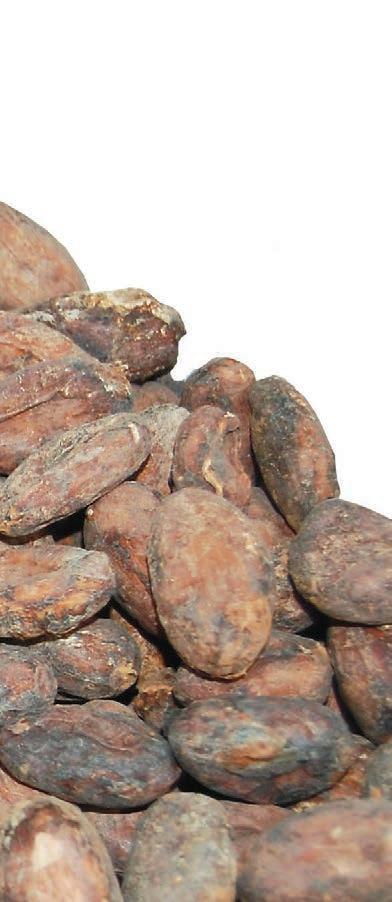
3 minute read
SWEET SCIENCE
Umd Chocolate Lab Engages Students Through Their Taste Buds
BY KATHLEEN MURPHY
Chocolate makes everything better. Even … chemical engineering?
“Absolutely,” said Richard Davis, who heads the Chemical Engineering Department at the University of Minnesota Duluth. “Chocolate makes the chemical engineering process relatable to students.”
From this thought came the development of the chocolate lab at . It all began about five years ago, when yndon Ramrattan, a lab coordinator in the chemical engineering department, returned from a visit to his native Trinidad, one of two islands that make up the island nation of Trinidad and Tobago in the Caribbean. His family owns a cocoa bean plantation on the island, and Ramrattan frequently could be found enjoying a cup of cocoa tea. An uncommon drink here in the orthland, he fielded a lot of uestions about the drink and wanted to share, returning from a visit with a bag of cocoa beans.
It did not take long for Ramrattan and associate professor Steve Sternberg to realize that bag of beans was the answer to a problem they’d been having: How does one demonstrate chemical engineering concepts to new students in an engaging way? “In other words,” said Davis, “How do we help freshmen understand what chemical engineering is all about and keep them interested?”
Prior to opening the chocolate lab, they had been attempting to interest students in chemical engineering by using more traditional chemical engineering processes, such as making ethanol and creating liquid distillation columns. “They may be traditional,” said Davis, “but they’re not very engaging. You can’t sample the product you spent all that time making, for example. They were finding that freshman and sophomores in particular were losing interest and leaving the field.
That all changed with the development of the chocolate lab. The lab has its own permanent space on campus, where students can engage in a real-world example of chemical engineering concepts.
Every class in the chemical engineering curriculum touches back on the chocolate lab at some point. The chocolate-making process is broken down into easily defined steps and explored, depending on the subject matter of the class. Every step of the process is researched, from the chemical changes that take place when the raw cocoa beans are roasted, to what happens to the chemical composition of the chocolate when it solidifies in a tar ars illennium Falcon mold.
It is easier for students to understand the process when the subject is something as common and universally loved as chocolate, versus gasses they had never heard of before entering the program. The students eventually do get into other processes, but it is the chocolate lab that ties them together throughout their time at UMD.

What happens to all that chocolate? Right now, it is simply kept by the students who make it, or shared amongst the lucky staff and students. Since the chocolate is not made in a kitchen that is approved for commercial use, the chocolate cannot be sold or distributed.


“We would love to have a full kitchen someday,” said Valerie Coit, communication specialist for UMD’s Swenson College of Science and Engineering. “It would be so enriching to see the chocolate lab grow into a resource for the community.” Students are already researching how to make chocolate that is low in sugar content and can be enjoyed by people who have diabetes, as well as an edible chocolate that does not contain any milk products for those who are lactose-intolerant. Both products involve chemical engineering principles and processes, and both show a clear idea of how chemical engineering affects real-world people and problems that need to be overcome and solved.














“Of course, there are a lot of other aspects to making chocolate besides engineering and science,” Davis said. “There is also the economic and social aspects, the ideas of fair trade and importing. We want our students to see the big picture behind what they are making.”
In that pursuit, Davis, Ramrattan and their colleagues in the department are working on expanding the chocolate lab even past the Twin Ports. In the spring of 2020, up to 24 students will depart for a study abroad trip to Trinidad. The trip will be centered on learning more about the chemical engineering process behind chocolate, but will be open to all UMD students. In Trinidad, the students will see in person the entire process of creating chocolate treats, from the harvest of cocosa beans to end production.
Everything from the lab to the study abroad trip is meant to pique and maintain interest in a career in chemical engineering. “Chocolate is accessible,” Davis said. “It helps to integrate the ideas of chemical engineering together in a fun way.” ❖










